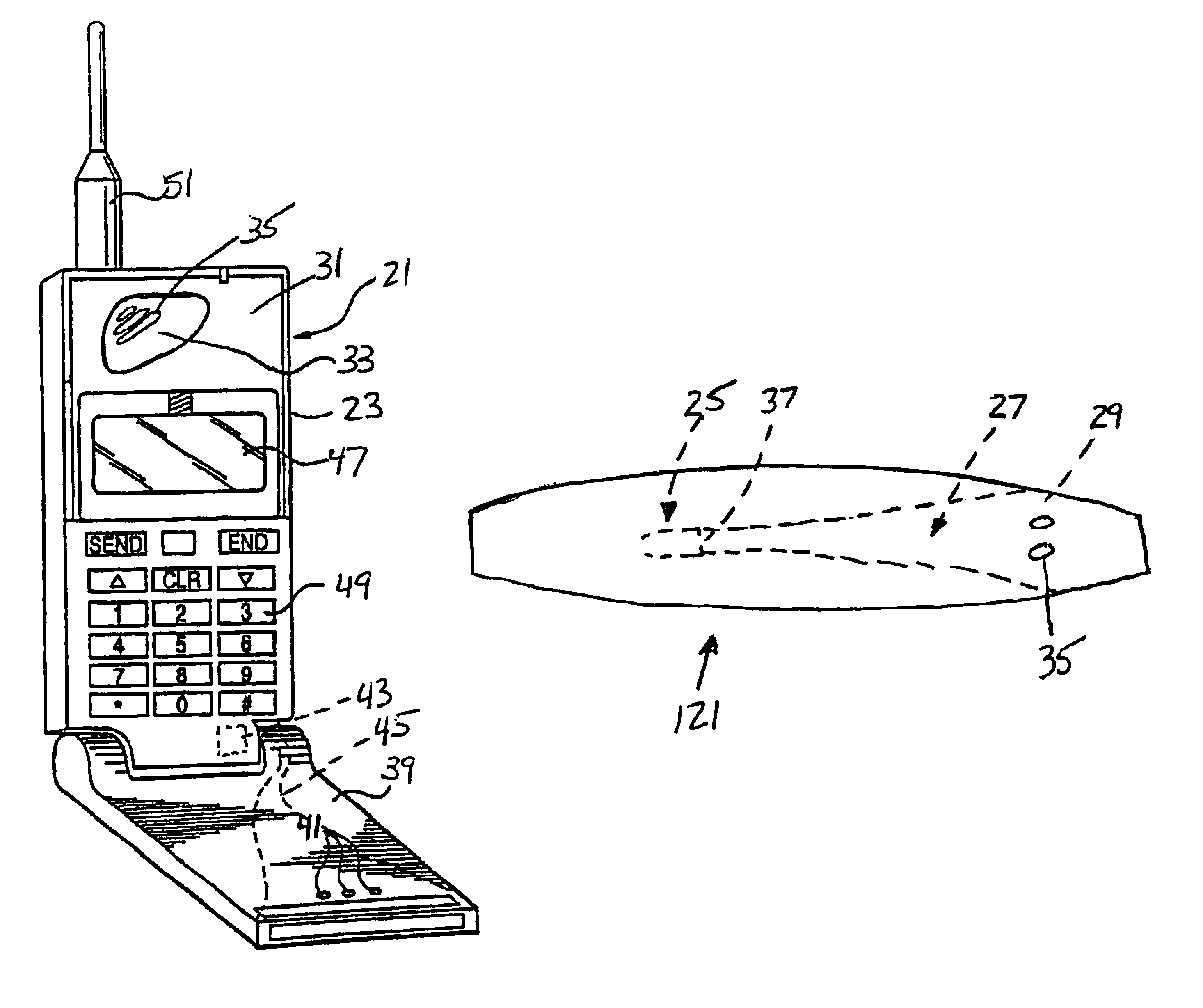Impedance matched horn having impedance matched to impedance of an ear
a technology of impedance matching and horn, which is applied in the field of impedance matching horn, can solve the problems of limiting the size, weight and type of equipment that can the features available in the larger receiver system such as loudspeakers and conventional telephones are not adapted to be used in the receiver of radiotelephone, so as to achieve the effect of reducing size and weigh
- Summary
- Abstract
- Description
- Claims
- Application Information
AI Technical Summary
Benefits of technology
Problems solved by technology
Method used
Image
Examples
Embodiment Construction
[0015]A portable device 21 according to an embodiment of the present invention is shown in FIGS. 1 and 2. The device 21 includes a body 23, a driver 25 mounted inside the body, and an acoustic horn 27. The horn 27 has an acoustical impedance matched with impedances of an ear and the driver 25. A large end 29 of the horn 27 extends to a position proximate an exterior surface 31 of the body 23. A plate 33, which is preferably simply part of the body 23, is preferably disposed proximate the large end 29 of the horn 27 and has one or more, preferably a plurality of holes 35 therein. The plate 33 assists in preventing external objects from being inserted in or falling into the horn 27. The horn 27 may be separate from the body 23 or may be integrally formed with the body, such as by being formed upon molding of a plastic body.
[0016]The driver 25 preferably includes a driving membrane 37. The driver 25 is preferably quite small, preferably on the order of 2 mm×1 mm×5 mm overall, although ...
PUM
 Login to View More
Login to View More Abstract
Description
Claims
Application Information
 Login to View More
Login to View More - R&D
- Intellectual Property
- Life Sciences
- Materials
- Tech Scout
- Unparalleled Data Quality
- Higher Quality Content
- 60% Fewer Hallucinations
Browse by: Latest US Patents, China's latest patents, Technical Efficacy Thesaurus, Application Domain, Technology Topic, Popular Technical Reports.
© 2025 PatSnap. All rights reserved.Legal|Privacy policy|Modern Slavery Act Transparency Statement|Sitemap|About US| Contact US: help@patsnap.com


